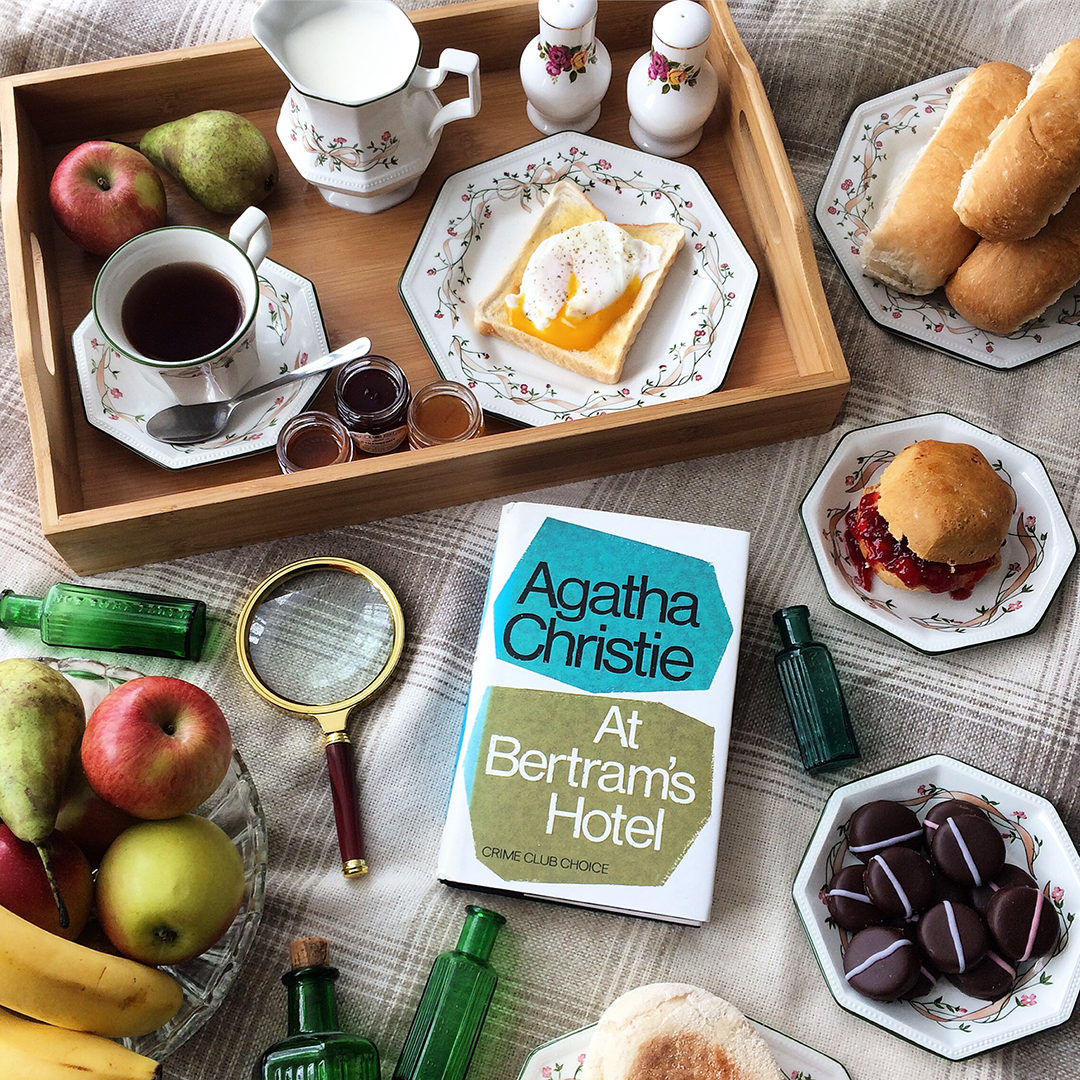Features
Delicious Death: Food in Christie

This article was written by Stephanie Russell. Stephanie is a bookstagrammer at Bookishsteph1 and co-host of the Agatha Christie Instagram book club, Maidens of Murder.
Trays of hot rock cakes came out of the oven. Never since have I tasted rock cakes like Jane’s. They were crisp and flat and full of currants, and eaten hot they were Heaven.
I was recently dining at a pub called The Blue Boar Inn and, because the pub’s name was almost identical to the fictional pub in St Mary’s Mead, I thought how great it would be if the pub served some Agatha Christie inspired dishes...
Food has a starring role within many of Agatha Christie’s books, whether it’s to reflect the time period, set the scene, show the strictures of routine, display class distinction and domesticity, or offer comfort. Often used as a murder weapon, it can also be used as an indicator that all is not well, as a disruption to routine or as change in a character’s habits.
I’ve explored my top 5 mentions of food in Agatha Christie’s stories below. Please be aware that the list does contain spoilers.
Miss Marple inserted a knife gingerly but with confidence. She was not disappointed. Rich deep yellow yolk oozed out, thick and creamy. Proper eggs!

Within Bertram’s Hotel, which is designed to evoke the Edwardian era, we have tradition and nostalgia used as a foil to the crimes being committed and food is one of the things that solidifies this quintessentially British image and dazzles the guests. Even Miss Marple has to pinch herself in disbelief at the service and breakfast she is offered. This use of food and the breakfast scene also represent Miss Marple’s traditional and no-nonsense character traits really well as the chambermaid knows not to mention the more modern American breakfast of cereals and orange juice (referenced previously in the book) and sticks with tradition. With food such as violet creams, seed cake, muffins, Oxford marmalade and eggs and bacon, this book is rich with food that acts as a great insight into the location and period.
2. The Adventure of the Christmas Pudding
DON’T EAT NONE OF THAT PLUM PUDDING. ONE AS WISHES YOU WELL.
Agatha Christie describes herself as the Chef in the foreword to this collection of short stories with there being two main courses, a selection of entrées and a sorbet. One of the main courses, 'The Adventure of the Christmas Pudding', is described as an “indulgence of my own, since it recalls to me the Christmases of my youth”. That perfect Christmas Day of fine food with family and friends gathered together in a cosy tableau is juxtaposed with a warning about the pudding and the mood is slightly dampened when Colonel Lacey bites into a piece of red “glass”, adding a sense of danger to the celebratory meal. The reader really gets a sense of comfort from the food in this book, which is a counterbalance to the nefarious plot. The food not only arouses Poirot’s gastronomic juices (his words) but also really adds a touch of indulgence and perfectly sets the scene of a traditional Christmas in an English manor house. Some of the fare on offer includes plum pudding, almonds and raisins, crystallised fruit and ginger, mince pies and roast turkey with chestnut stuffing.
Blackberries are said to be full of vitamins, but they may be deadly in other ways. On this occasion I rather fancy they have helped to put a rope round a man’s neck.
Food has a major role in this short story, especially eating habits and dining routines. The change in one diner’s routine and choice of meal is the clue Poirot needs to apprehend a murderer, aided by a waitress who prides herself on remembering the likes and dislikes of her customers.
As Poirot eats his filleted sole Molly the waitress seals the murderer's fate by listing what the murder victim ate on the night of his death as mulligatawny soup, beefsteak pudding, blackberry and apple pie and cheese.
Sardine sandwiches as well as the tomato ones. And some of those little scones you make so nicely. And I’d like you to make that special cake of yours.

This book contains the most decadent of foods that Agatha Christie described – Delicious Death cake. The name alone is indicative of what’s to come. It’s described as “rich, rich, of a melting richness” and the ingredients needed include “chocolate and much butter, and sugar and raisins”. It’s also described as having chocolate icing and “Good Wishes” written on top. The cake is mentioned early on in the story by Patrick and later is served as one character’s last meal, living up to its name.
5. The Chocolate Box, Peril at End House and At Bertram's Hotel
One more question, Doctor: would it be possible to introduce a fatal dose of poison into a chocolate?
Have you ever been gifted a box of chocolates? You don’t think twice about eating them, do you? They are often quite an intimate gift from a loved one who is familiar with the recipient's tastes and which chocolates they favour. In all three of these stories that special and well thought-out gift is turned into a potential murder weapon, or as a ruse to make someone think that the recipient was meant to be murdered, making a seemingly innocent present into something much more sinister with the addition of poison, drugs or medication.
These are the stories with the most memorable mentions of food for me, but there are plenty more Agatha Christie books featuring food as well as some wickedly delicious cocktails and drinks to explore. Share your favourites on Twitter using #Christea.



 UK
UK 